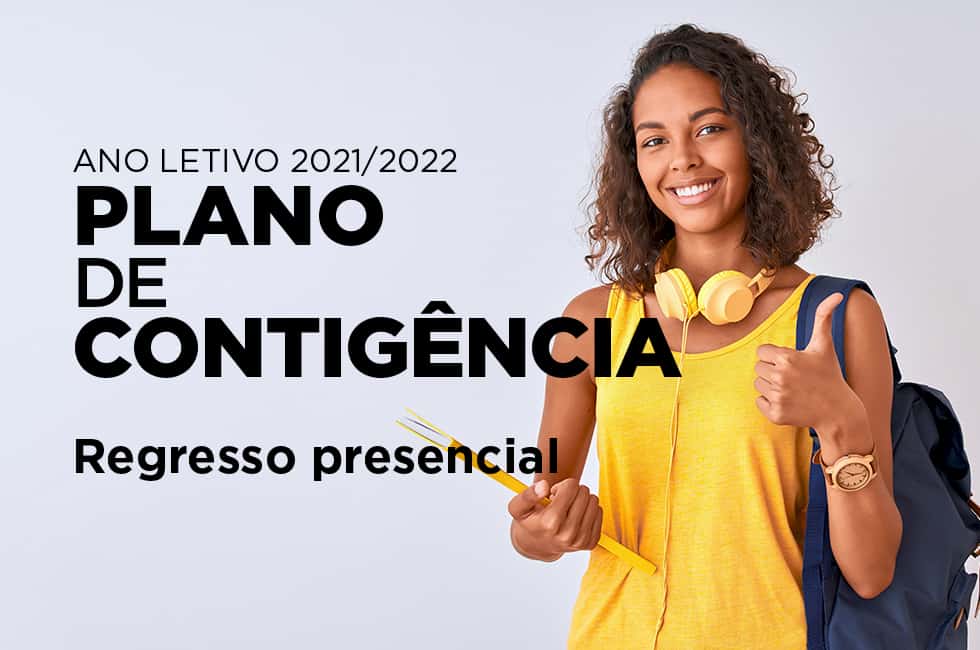
1. Introduction
Grupo CEU's COVID-19 Contingency Plan is a strategic instrument that defines measures to prevent and mitigate the risks associated with the spread of the SARS-CoV-2 virus, which causes the disease known as COVID-19.
For the safety and well-being of our community, the Contingency Plan for the academic year 2021/2022 is updated at the Universidade Autónoma de Lisboa, Escola Superior de Enfermagem São Francisco das Misericórdias and Autónoma Academy.
This Plan follows the guidelines of the General Directorate of Higher Education and the General Directorate of Health (DGS) for Scientific and Higher Education Institutions to ensure the realization of classroom teaching and non-teaching activities for the Academic Year 2021-2022 and OT 006 /2020 from the DGS.
According to DGS Norm 002/2021, all persons resident in Portugal aged 12 years and over were included in the vaccination plan against COVID-19, allowing for high vaccination coverage.
Grupo CEU associates itself with the recommendation of vaccination against COVID-19, as an essential factor for the protection of Public Health and for the control of the pandemic.
2. Objectives
The Contingency Plan has the following main objectives:
- Minimize the impact of COVID-19 on our community of students, faculty, researchers, administrative staff and visitors;
- Ensuring the functioning of all CEU Group structures according to the declared risk level;
- Put in place containment measures adjusted according to the declared risk level.
3. Facilities
Entry and stay at the facilities (Rua de Santa Marta, 47, 56 and 56G; Rua Alexandre Herculano, 2, 2º; Rua Fernando Assis Pacheco, 207) presupposes knowledge and respect for the current Contingency Plan.
3.1. Behavior on the premises
Students, teachers, employees, guests and visitors have a duty to promote safety and prevention, with a view to minimizing the risks inherent in contagion with COVID-19. Thus, entering and staying at the premises presupposes:
- Mandatory use of a mask;
- Frequent hand hygiene;
- Respect for employee indications;
- Entry may be subject to verification;
- Possibility of voluntary temperature measurement;
- Maintaining social distancing whenever possible.
4. COVID-19
4.1. Signals and symptons
“The symptoms of COVID-19 range in severity from no symptoms (being asymptomatic) to fever (temperature ≥ 38.0ºC), cough, sore throat, tiredness and muscle aches and, in the most severe cases, severe pneumonia, respiratory syndrome severe acute illness, septicemia, septic shock and eventual death. The data show that the worsening of the clinical situation can occur quickly, usually during the second week of the illness” (more information in DGS).
4.2. Streaming
“COVID-19 is transmitted person-to-person through close contact with people infected with SARS-CoV-2 (direct transmission), or through contact with contaminated surfaces and objects (indirect transmission). Transmission by close contact occurs mainly through droplets that contain viral particles that are released through the nose or hollow of infected people when they cough or sneeze, and that can directly reach the mouth, nose and eyes of those nearby. Droplets can settle on objects or surfaces around the infected person and thus infect other people when they touch these objects or surfaces with their hands, then touch their eyes, nose or mouth. There is also evidence suggesting that transmission can occur from an infected person about two days before symptoms appear. Currently, it is estimated that the incubation period of the disease (time elapsed from exposure to the virus until the onset of symptoms) is between 1 and 14 days” (more information in DGS).
4.3. Manifestation of symptoms
The manifestation of any symptom associated with COVID-19 inhibits the travel of the student, teacher or employee, who must contact the SNS24 Line and follow its instructions.
4.3.1 Probable cases and possible cases
“The former «suspected cases» are now identified as: Probable case: Person who meets the clinical and epidemiological criteria or clinical and imaging criteria for defining a probable case of COVID-19;
Possible case: Person who meets the clinical criteria for defining a possible case of COVID-19. They are essentially people who develop an acute respiratory condition with cough (new or worsening of the usual cough), or fever (temperature ≥ 38.0ºC), or dyspnea / respiratory difficulty” (DGS Norm 020/2020).
4.4. validated suspicions
In the event of a positive test, proceed in accordance with the guidelines of the health authorities.
4.5. Returning to normal activity after being declared positive or being in isolation
The return to normal academic or work activity, after having been diagnosed with COVID-19, or having been in prophylactic isolation, occurs with the resolution of symptoms and according to the periods established by the health authorities.
4.6 Tests
Testing is promoted by carrying out Rapid Antigen Tests (TRAg), in a calendar to be announced and updated whenever necessary.
5. Plan for the 2021/2022 school year
- Teaching and non-teaching activities take place in person, and can be complemented with distance activities;
- Scientific meetings at a distance are privileged. Those carried out in person respect the recommendations of the DGS and other legislation in force;
- It is recommended that contacts with administrative services be made remotely, by phone or email; face-to-face contacts can be made by appointment.
- The Library works properly (more information at https://biblio.autonoma.pt/).
- The bar and canteen services and study spaces work in an adjusted manner, complying with safety regulations and the legislation in force.
6. Doubts
Doubts and questions regarding this topic should be addressed to covid19@autonoma.pt


